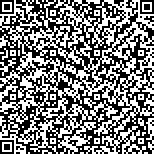本文已被:浏览 1491次 下载 392次
Received:August 07, 2023 Published Online:April 20, 2024
Received:August 07, 2023 Published Online:April 20, 2024
中文摘要: 目的 探讨超声引导与神经刺激仪定位进行臂丛神经阻滞(BPB)在老年肱骨手术中的麻醉效果。
方法 选取铜陵市立医院2020年5月至2023年5月收治的99例拟行肱骨骨折切开复位内固定手术的老年患者,采用随机数字表法分为超声组(55例)和刺激仪组(54例),超声组予以超声引导下BPB,刺激仪组予以神经刺激仪定位BPB。比较两组患者阻滞效果、膈肌功能、血流动力学指标、应激指标及围术期麻醉不良反应。
结果 超声组阻滞起效时间[(4.82±1.44)min vs(6.95±1.87)min, t=6.675]和完善时间[(17.62±2.57)min vs(20.54±3.79)min, t=4.689]短于刺激仪组(P<0.01),0.75%盐酸布比卡因用量[(21.33±2.05)mL vs(25.54±2.52)mL, t=9.592, P<0.01]少于刺激仪组。注药后30 min,超声组膈肌移动度在平静呼吸位[(1.52±0.23)cm vs(1.24±0.22)cm]和在最大呼吸位[(4.01±0.44)cm vs(3.19±0.49)cm]高于刺激仪组(P<0.01)。入室时至手术结束时,两组患者心率(HR)和平均动脉压(MAP)先降低后升高(P<0.01),且超声组手术开始前10 min至手术结束时HR、MAP明显高于刺激仪组(P<0.05)。术前、术后当天及术后2 d,两组患者血清肾上腺素、去甲肾上腺素和皮质醇水平先升高后降低(P<0.01),但各时点两组间比较差异无统计学意义(P>0.05)。两组患者围术期躁动、恶心呕吐、嗜睡等麻醉不良反应发生率比较差异无统计学意义(P>0.05)。
结论 超声引导下BPB方案在老年肱骨手术中阻滞起效快,对患者膈肌功能影响小,血流动力学稳定,机体应激反应小。
Abstract:Objective To explore the analgesic effects of brachial plexus block (BPB) guided by ultrasound versus localized by nerve stimulator in elderly patients who underwent humeral surgery.
Methods Ninety nine elderly patients scheduled for open reduction and internal fixation of humeral fractures in Tongling Municipal Hospital from May 2020 to May 2023 were selected ,and randomly divided into ultrasound group (55 cases) and stimulator group (54 cases) based on a random number table method. The ultrasound-guided BPB was performed in ultrasound group, and the nerve stimulator localization for BPB was performed in stimulator group. The blocking effect, diaphragmatic function, hemodynamics indexes, stress indexes and perioperative adverse anesthesia reactions were compared between the two groups.
Results The onset time[(4.82±1.44)min vs(6.95±1.87)min, t=6.675] and improvement time [(17.62±2.57)min vs(20.54±3.79)min, t=4.689], and dosage of 0.75% bupivacaine hydrochloride [(21.33±2.05)mL vs(25.54±2.52)mL, t=9.592] in ultrasound group were lower than those in stimulator group (P<0.01). After injecting drugs for 30min, the diaphragm mobility at calm breathing position [(1.52±0.23)cm vs(1.24±0.22)cm]and at 〖JP2〗maximum breathing position [(4.01±0.44)cm vs(3.19±0.49)cm]in ultrasound group were higher than those in stimulator group(P<0.01). From entering the operating room to the end of surgery, heart rate (HR) and mean arterial pressure (MAP) of the two groups decreased first and then increased (P<0.01), and the HR and MAP of ultrasound group were significantly higher than those of stimulator group from 10 min before the start of surgery to the end of the surgery (P<0.05). Before surgery, on the day and 2 days after surgery, levels of serum epinephrine, norepinephrine and cortisol in the two groups showed a trend of first increasing and then decreasing (P<0.01), but no significant difference was found between the two groups at each time point (P>0.05). There was no significant difference in the incidence of perioperative adverse anesthesia reactions (agitation, nausea and vomiting, lethargy) between the two groups (P>0.05).
Conclusion Ultrasound-guided BPB has a fast block onset time, few effects on diaphragmatic function, stable hemodynamics and little stress response in elderly patients undergoing humeral surgery.
keywords: Brachial plexus block Positioning Ultrasound guidance Nerve stimulator Humeral surgery Diaphragmatic function Hemodynamics Stress state
文章编号: 中图分类号:R614.4 文献标志码:A
基金项目:
| Author Name | Affiliation |
| XIAO Yu, LI Li | Department of Anesthesiology, Tongling Municipal Hospital, Tongling Hospital Affiliated to Wannan Medical College, Tongling, Anhui 244000, China |
| Author Name | Affiliation |
| XIAO Yu, LI Li | Department of Anesthesiology, Tongling Municipal Hospital, Tongling Hospital Affiliated to Wannan Medical College, Tongling, Anhui 244000, China |
引用文本:
